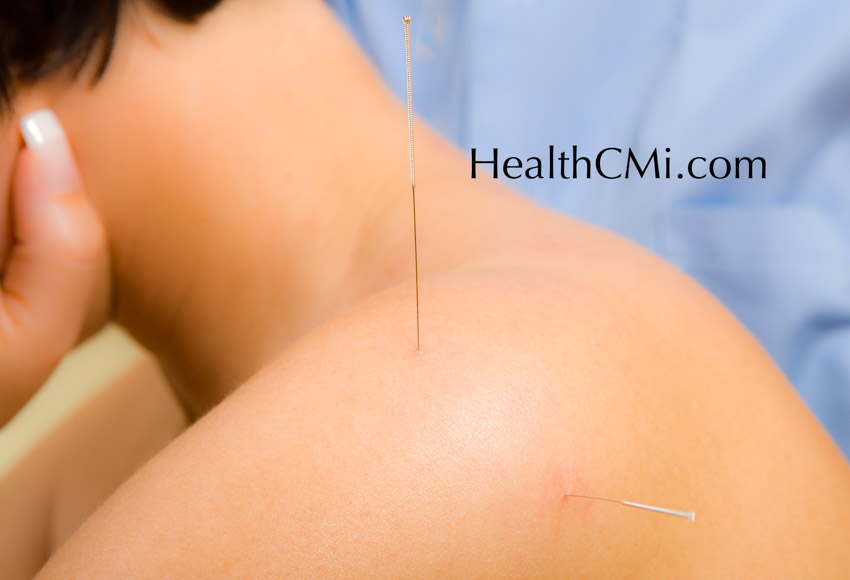
Acupuncture combined with moxa is effective for the treatment of shoulder periarthritis. Suyang City Hospital of Traditional Chinese Medicine researchers conducted a clinical trial comparing distal warm needle acupuncture with local non-moxa acupuncture treatments. The results show that patients receiving distal warm needle acupuncture have better recovery rates but lower total effective rates. [1] A third arm to the study would have helped clarify whether or not additive or synergistic effects are produced by combining local and distal approaches to patient care.
The measurement parameters in this study included a four-level clinical efficacy rating, Visual Analogue Scale (VAS) pain level scores, Barthel Index (BI) daily activity scores, and Constant Murley Score (CMS) shoulder function scores. For the efficacy rating, among the 38 patients in the local non-moxa acupuncture group, 18 recovered, 8 were significantly effective, 4 were effective, and 8 were ineffective, contributing to a total efficacy rate of 94.74 percent. In the distal warm needle acupuncture group, 24 recovered, 9 were significantly effective, 3 were effective, and 2 were ineffective, contributing to a total efficacy rate of 78.95 percent. While the total effective rate was higher in the non-moxa group, the recovered and significantly effective rates were higher in the distal acupuncture plus moxa group.
For VAS scores, patients in the non-moxa acupuncture group experienced a smaller decrease from 8.42 ±2.21 to 3.97 ±0.98. The decrease was greater in the warm needle acupuncture group (8.36 ±2.16 to 2.75 ±0.77). For BI scores, the warm needle acupuncture group presented a more considerable increase from 67.25 ±3.58 to 90.65 ±5.46. The improvement in the non-moxa acupuncture group was from an average of 67.81 ±3.49 to 81.57 ±5.79. For CMS, the warm needle acupuncture group showed more significant improvements from 68.15 ±4.26 to 91.75 ±6.72. The non-moxa group improved from 68.73 ±4.53 to 83.94 ±6.93.
In this investigation, a total of 76 patients were randomized into two groups. The non-moxa acupuncture group was comprised of 20 males and 18 females. Patient age ranged from 34 to 75 years, with a mean age of 55.61 ±3.87. Disease course ranged from 2 months to 3 years. Average disease course was 1.23 ±0.36 years. The warm needle acupuncture group was comprised of 19 males and 19 females. Patient age ranged from 33 to 75 years, with a mean age of 55.49 ±3.93 years. Disease course ranged from 3 months to 3 years. Average disease course was 1.25 ±0.35 years. Of all the patients admitted, 25 cases had symptoms on the right shoulder, 13 on the left.
The non-moxa acupuncture group received acupuncture on three acupoints. Size 0.30 mm × 40 mm filiform acupuncture needles were inserted perpendicularly with an insertion length of 25 to 40 mm. A lifting and thrusting and mild reinforcing-attenuating manipulation method was applied. Needles were retained for 20 minutes after obtaining deqi. Treatment was administered daily for 20 consecutive days. The three acupoints were the following:
- SI9 (Jianzhen)
- TB14 (Jianliao)
- LI15 (Jianyu)
Warm needle acupuncture was administered for patients in the other group following the Xun Jing Qu Xue principle, meaning to select the acupoints along the meridians. For those suffering pain along the Yangming Large Intestine Meridian of the hand , LI11 (Quchi) and ST38 (Tiaokou) were used. For those suffering from pain along the Shaoyang Sanjiao Meridian of the hand, TB5 (Waiguan) and GB34 (Yanglingquan) were used. For those suffering pain in the Taiyang Small Intestine Meridian of the hand, SI3 (Houxi) and BL58 (Feiyang) were used. The same needling technique was used as in the non-moxa acupuncture group. After obtaining deqi, 20 mm moxa pieces were connected to the needle handles. Treatment was given daily for 20 consecutive days.
The results are mixed, with local non-moxa acupuncture producing a greater total effective rate and distal moxa acupuncture producing a higher total recovery rate. At HealthCMi, we would like to have seen a third arm to the study combining the modalities to get a clearer picture of interactions between local and distal treatment approaches to patient care.
Reference
[1] Di Yuan, Effect of Acupuncture and Moxibustion on The Degree of Pain in Patients with Periarthritis of Shoulder, Inner Mongolia Journal of Traditional Chinese Medicine Vol.40 No.8 2021.


